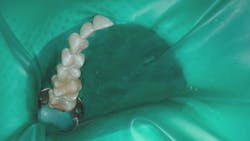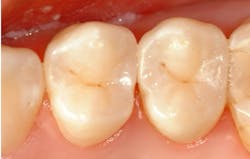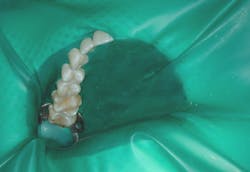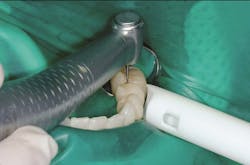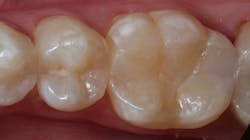How to make operative dentistry enjoyable, predictable, and productive
I have been practicing for many years and enjoy accomplishing all types of dental treatment most of the time. However, a day where most of the treatment is routine operative dentistry is not a day to look forward to. These low-revenue procedures take considerable time, energy, and effort and are not my favorite type of oral treatment. With your experience, what can you suggest that could make this area of dentistry more appealing and productive for me?
Why the fees for operative dentistry (primarily direct-placement composite restorations) have remained so low is unclear to me. A typical large MOD resin-based composite requires the average dentist up to half an hour to anesthetize, prep the tooth, place the restorative material, and finish the restoration. For that amount of time and effort, the average fee is about one-third to one-half of doing endodontics or fixed prosthodontics. Does that make any sense? The obvious answer is an immediate no, but how can we make this unfortunate situation better? I have some solutions for you, gained from my many years of clinical practice and experience. I enjoy doing operative dentistry even though I’m a prosthodontist. You may already be doing some of the following concepts. Look over this information and see if some of these suggestions could help make operative dentistry more enjoyable and productive for you (figure 1).
Tips to make operative dentistry more enjoyable and productive
The following concepts involve organization by someone who is in charge of planning treatment for the overall operative procedure—your dental assistant.
Also by the author:
Educate dental assistants (DAs): Educating a new dental assistant to best assist you is not a one-day procedure. It requires constant updating of information and upgrading of clinical skills. Along with the initial education, I suggest daily upgrading and modification. Provide verbal and visual education to patients while treating them. The dental assistants cannot avoid hearing and/or seeing that education at the same time.
Have routine staff education sessions: You and your staff know the areas in your practice in which you are doing well and those that could improve. Assign a team member to identify those areas that need help and have in-service education sessions regularly as needed. We prefer once per month. Who organizes the sessions and leads the discussion? I suggest assigning the staff member who is most knowledgeable about the topic. Afterward, follow up with questions to ascertain your team’s retention and understanding of the topic.
Schedule operative procedures alternating with nonoperative procedures: A full day of direct operative procedures is a grueling experience and often doesn’t produce adequate revenue. Don’t schedule direct procedures one after the other. Space them out with other indirect restorative procedures, endo, surgery, or diagnostic procedures. The clinical diversity makes the day far more enjoyable than having to do many direct procedures back-to-back.
Review setup needs for each patient: Procedures are significantly more efficient and effective if the staff involved know what instruments and materials the doctor will need. Go over the anticipated setup needs in your daily huddle.
Have total setups of supplies and equipment (trays, etc.) for the procedures: You have a favorite way to organize your instruments and supplies for the many procedures accomplished in your practice. Make sure these setups are complete and contain all the potential items necessary for the procedure. Stopping a procedure to wait for a DA to find a missing instrument or supply item, multiplied over a day of many patients, wastes time and financial resources. Preparing complete instrument and supply setups requires experience and proactivity on the part of DAs and is a constantly changing process.
Have operatories completely set up before starting the procedures: Assuming the equipment and supply needs have been discussed before the patient arrives, there is no reason the operatory cannot be set up to include all potential needs for the specific patient. Don’t forget items like curing lights, air abrasion units, medications for irritated soft tissue, or other occasionally needed items.
Have local anesthetic delivered by educated hygienists: Almost all US states allow educated dental hygienists to deliver local anesthetic. This logical and well-proven concept has been shown to greatly increase hygienists’ interest and self-esteem and reduce time for clinical procedures. Since painless injections are one of the most important procedures patients use to judge the competence of a dentist, make sure you educate your hygienists on how to deliver painless injections.
Work with two assistants: If you have a busy practice seeing many patients per day, using two assistants for procedures has been shown to significantly increase patient service potential and productivity. In some practices with financial or administrative challenges, this may not be possible, but it is a great way to improve operator enjoyment, speed of procedures, and optimum productivity.
Use expanded team clinical functions: Some parts of operative dentistry procedures can be legally delegated to educated staff. Identify those legal procedures in your geographic location, incorporate team education on them into your office schedule, and use them in your practice.
Work in an optimum dry field (figure 2): Although using a rubber dam is still the gold standard for operative dentistry, most dentists are not using it. Products such as the Isolite 3 or Mr. Thirsty and others should be used in the absence of a rubber dam. Endodontic procedures mandate use of a rubber dam to avoid inadvertent dropping of endo files or other objects into the patient’s throat.
Use optimum materials: Most direct restorations do not require extreme operator effort or expertise. They require optimum materials and techniques as well as attention to detail to provide long-term service and esthetic acceptability. Practical Clinical Courses offers numerous courses containing research-supported best operative materials, devices, and techniques needed for resin-based composites, glass ionomers, resin-modified glass ionomers, direct resin veneers, and the respective needed preventive concepts. These are listed later in this article.
Use electric handpieces (figure 3): About one-half of American dentists have electric handpieces. Are they better than air rotors for operative procedures? I have used both air-driven and electric handpieces for my entire long career. There are specific uses where each has advantages. My preference is to use both for those specific procedures. For example, for removing a large previously placed composite or amalgam restoration or accomplishing the initial rough and fast cutting of any large direct restoration or crown prep, I usually use an air rotor. These devices stall if you get too aggressive when accomplishing procedures that you are trying to complete rapidly, thus preventing overcutting. Electric handpieces cut more accurately and precisely than air-driven handpieces. Some dentists, including me, prefer electric for the final portions of tooth preparations for both direct and indirect restorations. Of course, either can be used as the sole way to prepare teeth or finish restorations if you desire.
Use optimum curing lights and curing techniques: Proper curing of composite is mandatory and one of the most inadequately accomplished procedures in operative dentistry. The current emphasis on bulk-filling tooth preparations is a misguided concept, but manufacturers continue to promote it. Curing much more than 2 mm of composite is seldom accomplished with any light-cured resin material or any light. I suggest curing with a fast-curing light; there are several excellent ones on the market. The Valo Grand from Ultradent is currently among the most adequate. Laser light-curing is just entering the market with an optimistic challenger, Monet from AMD Lasers. It is still undergoing research at Clinicians Report Foundation. Curing with these lights is extremely fast and seldom takes more than a few seconds. Be very aware of the heat generated in the tooth by such lights and use air-cooling on the tooth to prevent damage.
Summary
Placing direct dental restorations requires time equivalent to other more complex revenue-producing procedures, but direct restorations are still a major part of general practice. The methods suggested in this article can make direct dental restorations faster, more efficient, long-lasting, and enjoyable to doctors and other dental team members (figure 4).
Author’s note: The following educational materials from Practical Clinical Courses offer further resources on this topic for you and your staff:
One-hour videos:
- Making Foolproof Class II Composites (Item #V3501)
- Multiple Patient Scheduling—Working Smarter, Not Harder (Item #V4794)
Two-day hands-on courses in Utah:
- Restorative Dentistry 1: Restorative, Esthetic, Preventive with Dr. Gordon Christensen
- Restorative Dentistry 2: Fixed Prosthodontics with Dr. Gordon Christensen
For more information, visit our website at Practical Clinical Courses or call (800) 223-6569.
Editor's note: This article appeared in the July 2022 print edition of Dental Economics magazine. Dentists in North America are eligible for a complimentary print subscription. Sign up here.About the Author
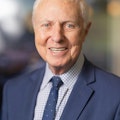
Gordon J. Christensen, DDS, PhD, MSD
Gordon J. Christensen, DDS, PhD, MSD, is founder and CEO of Practical Clinical Courses and cofounder of Clinicians Report. His wife, Rella Christensen, PhD, is the cofounder. PCC is an international dental continuing education organization founded in 1981. Dr. Christensen is a practicing prosthodontist in Provo, Utah.
